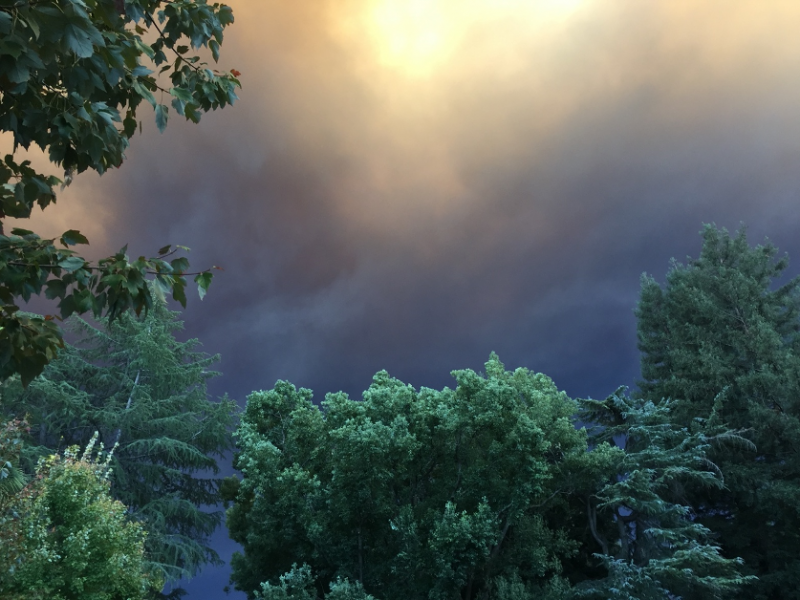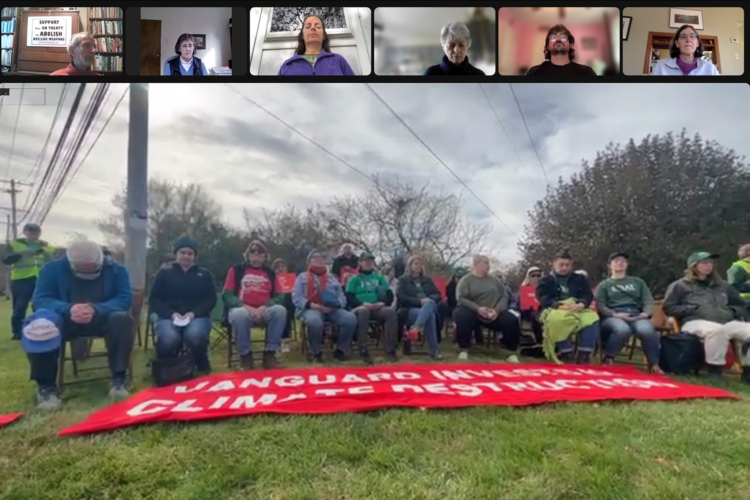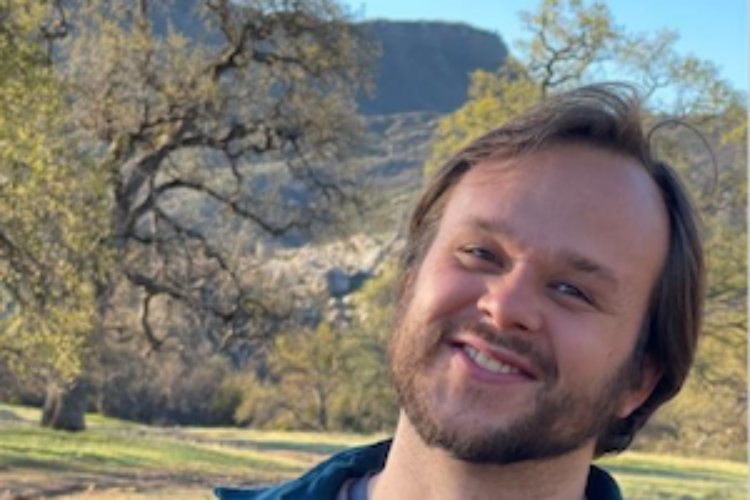Engaging with Ecological Grief

By Gayle Matson.
Recently a Friend in my Quaker meeting spoke movingly of her sadness upon visiting a favorite place that had been ravaged by fire last year. Many of us can relate to that shock and dismay of discovering that a landscape or ecosystem we dearly love has recently been devastated by fire, drought, rising sea levels, or an extreme weather event brought on by a warming planet.
Loss of place is not a trivial thing. In its 2017 publication titled Mental Health and our Changing Climate, the American Psychological Association wrote that the toll of solastalgia (aka climate-grief, eco-grief or ecological mourning) on our mental health is profound, responsible for stress, anxiety, depression, fatalism, helplessness, and resignation. As Friends we are aware that climate change mitigation policies and actions are critical and urgent. But some of us may not be aware that organizations ranging from the Environmental Protection Agency to the United Nations are already emphasizing the importance of climate adaptation, embracing strategies to help us prepare physically, socially, emotionally, and spiritually, for the climate breakdown already happening.
Pacific Yearly Meeting’s Unity with Nature Committee, of which I am a member, has recently been looking at ways to help our member meetings and worship groups build climate resilience as we adapt to the reality of a changed future. As part of that exploration, I participated in a virtual seven-week Eco-Grief Circle sponsored by the Creation Care Alliance of North Carolina. I was one of about a dozen participants of diverse ages from around the country, with four group leaders (including a hospice chaplain, two therapists, and an environmental activist) for what was a remarkably well-organized and professionally facilitated support group.
The eco-grief circle gathered weekly on Zoom, beginning with silent worship while participants shared “a grief and a gratitude” in the chat box. One of the leaders read the chat offerings while another lit candles on video to honor the sentiments as they were spoken aloud. Each week a poem was read, much like a prayer offering, carefully chosen to foreshadow the week’s theme. The topics were broad and delivered with personal reflections from the leaders. One week we heard about the five gates of grief described by Francis Weller in his book, The Wild Edge of Sorrow. Another week one of the leaders reflected on Joanna Macy’s Working through Environmental Despair. Sometimes guided meditation or movement was used, with video off, to go deeper.
During the second half of our time together we broke into small groups of two or three for sharing on a query related to the week’s theme. Like the experience of worship sharing groups at Quaker gatherings, the trust and bonding that occurred in heart-to-heart connections through personal reflection was edifying. We concluded each session by coming back together in the larger group for a closing poem/prayer and blessing.
I did not consider myself to be actively burdened by eco-grief when I began in this circle, unlike some participants, who described lying awake at night unable to sleep, ruminating about impending climate catastrophe and imagining the next extreme weather event. So, I was a little unprepared for how deeply this eco-grief circle affected me, how much I looked forward to it, and how quickly I came to consider it an essential part of my self-care. Joanna Macy and others write that releasing our unaddressed grief and fear about climate change frees up energy we need to deal with the magnitude of the problem, and I experienced that dynamic firsthand. I had not been aware of just how much despair I was carrying about the mess we humans have made of Creation. Keeping that despair at bay required denial and detachment that was eroding my capacity for living mindfully and courageously.
The final group session, which focused on the topic of “integration,” (which I would rephrase as “living with eco-grief”) was where things really came together for me. Francis Weller writes in The Wild Edge of Sorrow that the task of a mature person is to “carry grief in one hand and gratitude in the other and be stretched large by them,” and I could feel that happening, almost like I was catching wind in my sails.
Our Unity with Nature Committee is still discerning how we might offer such a circle as a ministry for Friends in Pacific Yearly Meeting. The project of encouraging Quakers to turn toward the pain of their eco-grief is not an endeavor to undertake lightly. Still, as Joanna Macy notes in Coming Back to Life, “pain is the price of consciousness in a threatened and suffering world. Experiencing the pain is not only natural; it is an absolutely necessary component of our collective healing.” Meanwhile, the Creation Care Alliance of North Carolina is developing a leadership workshop for individuals seeking to bring eco-grief circles to their own congregations and communities, and I’ve already put my name on the list.
Gayle Matson is a member of Chico Friends Meeting in Chico, California and serves on the Pacific Yearly Meeting Unity with Nature Committee.


